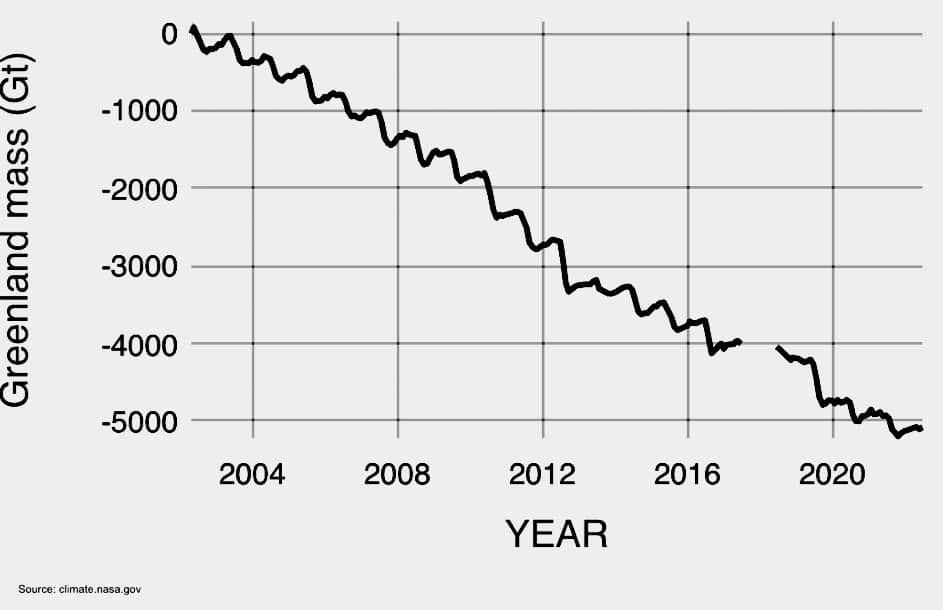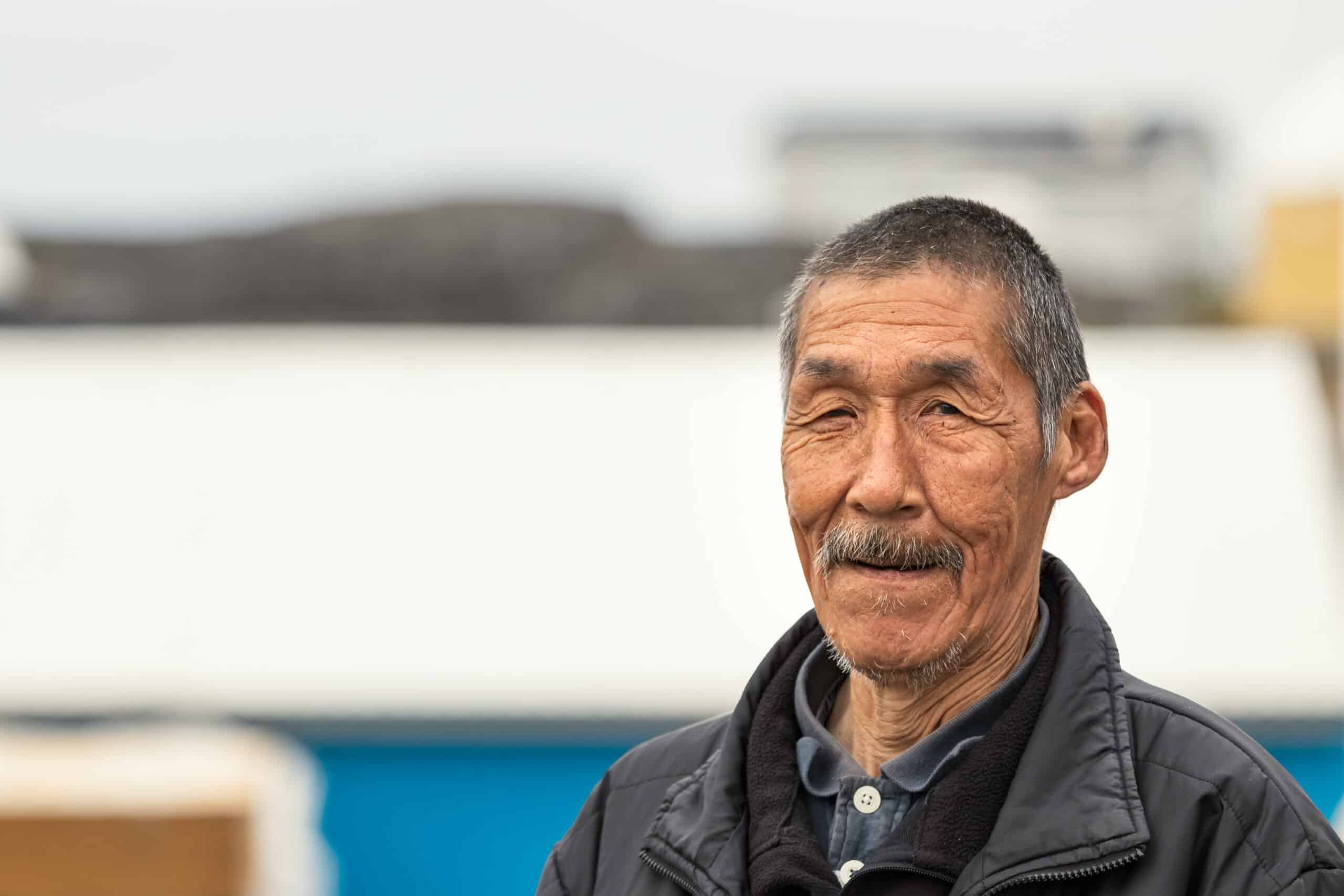Greenland is Melting
and a UNESCO Heritage site
is Leaking out of the Drain
The melting of the Greenland ice cap, which has been observed for the past twenty-five years, is likely to accelerate. Glaciers, like the one in the Ilulissat fjord, classified as a World Heritage Site, are threatened. For the inhabitants, especially the Inuit populations, the impacts of global warming have already begun to disrupt their way of life.
In 2021, for the 25th consecutive year, the Greenland ice sheet lost more mass during the melt season than it gained during the winter: 166 billion tons of ice evaporated in 2021, according to a recent UN report. In twenty years, it has lost 4.7 million billion liters of water and contributed to raising the sea level by 1.2 cm, according to measurements made by Polar Portal since 2002.

“Arctic amplification”
This destruction is likely to increase because, since 1979, the Arctic has warmed almost four times faster than the planet, a phenomenon known as “Arctic amplification”.
If the Greenland ice sheet were to completely melt and the meltwater flow into the ocean, then the global sea level would rise by about seven meters (23 feet), according to Nasa: Earth would rotate more slowly, with the length of the day becoming longer than it is today, by about 2 milliseconds.
On July 10, 2019, giant icebergs formed when they suddenly broke off the Sermeq Kujalleq glacier
generating high waves pouring into the frozen fjord of Ilulissat (Disko Bay, west coast of Greenland).
The Greenlandic glaciers: endangered, vulnerable, and threatened species
Are the days of the frozen Ilulissat Fjord, a UNESCO World Heritage Site, numbered? Located on the west coast of Greenland in Disko Bay, this fjord of 70 km2 is at the sea mouth of the Ilulissat glacier (Sermeq Kujalleq). With walls that can reach 100 meters high, this glacier is one of the most active in the world: it produces more icebergs than any other glacier in Greenland.
According to Polar Portal, “2021 saw an acceleration of its ice loss where the rate of loss had stagnated for several years.”

Impacts of global warming on residents
According to a 2018-2019 national survey, most Greenland residents (55%) believe that the glacier closest to their town or village has retreated in recent decades and that this is a dangerous development.
76% say they have personally felt the effects of climate change, but the concerns vary by region: loss and thinning of sea ice (mainly in the North, Northwest, and East), melting of the ice cap, permafrost (mainly in the West), unpredictable weather (Southwest), intense storms and melting glaciers (South). This is because, depending on where they live, the 56,661 inhabitants of this immense territory (836,000 square miles, about three times the area of Texas) are subject to different meteorological conditions (more intense in the northern regions) and confronted with extreme natural and climatic phenomena, such as polar night and cold records: Greenland recorded the lowest temperature (-69.6°C) in the Northern Hemisphere on 22 December 1991.
79% of residents believe that the local sea ice has become more dangerous to travel on; the main means of transportation in Greenland, which has no road network, is by boat. This is particularly problematic for families (three out of four) who depend on the food they hunt, fish, or gather. “Subsistence hunting and fishing are still part of the Greenlandic way of life, and the Inuit are personally exposed to the hazards and hardships of a rapidly changing environment,” confirms geologist Karin Kirk, who has studied climate change in the area.
A majority of Greenlanders believe that climate change will affect hunting, fishing, and dog sledding. Paulus Larsen, an Inuit from East Greenland, testifies about it:
There is nowadays more snow than in the past. Sometimes two metres or more. Thin ice covered with a thick layer of snow is very unreliable. Just going out on the ice to go ice fishing for suluppaavaq (‘ocean perch’) is not possible anymore.
How useful was this post?
Click on a star to rate it!
Average rating 5 / 5. Vote count: 7
No votes so far! Be the first to rate this post.

